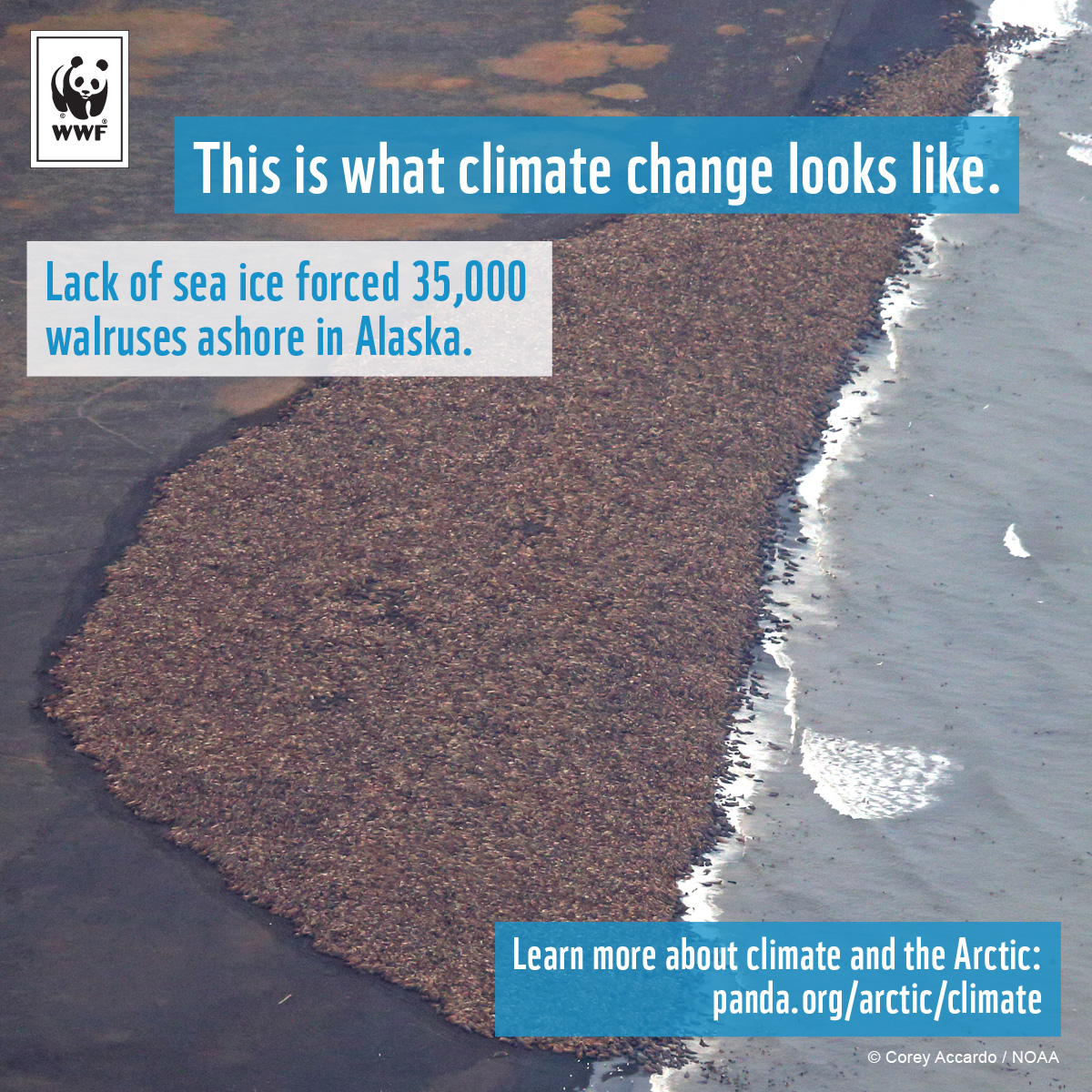
We are the walrus
For people who have problems visualizing climate change, this is what it can look like in the Arctic – 35,000 walruses crowded onto an Alaskan beach, driven there by the loss of their preferred resting and feeding place on coastal ice. A similar scene is playing out on beaches across the Bering Strait in Russia. These enormous gatherings follow the warmest global June-August period on record.
The large-scale gatherings are deadly. There are at least 50 carcasses on the Alaskan beach, mostly smaller calves and females, trampled by males. This happens even in years (like this one) when the sea ice does not hit a new record low. The trajectory, and projections are the same – continued ice loss in the Arctic. Seeing the walruses on the beach is a tangible sign of that change.
Less obvious, but no less serious, are the changes in the global climate driven by the continuing loss of Arctic ice – the changes affecting a large proportion of the world’s population. Unusual weather patterns in the mid-latitudes of the northern hemisphere have been linked to the climate disturbance caused by Arctic ice loss. To put that in some perspective, one study estimated the costs on uncontrolled climate change to be $12 trillion by 2095. Another US study released in June projected large-scale impacts on coastal communities, problems with extreme heat, and massive crop losses.
This is not a problem confined to a few thousand walruses on a beach in Alaska. We are the walrus. We can do as they are, adapt the best we can, huddled together, or we can take action, and demand that our governments take action on reducing greenhouse gas emissions and ramping up renewable energy sources.
